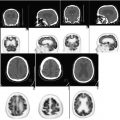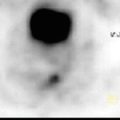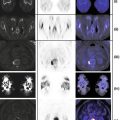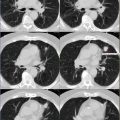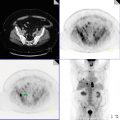(1)
Kaiser Permanente, Southern California Permanente Medical Group, Riverside, CA, USA
(2)
Molecular Imaging Center and PET Clinic, University of Southern California, Los Angeles, CA, USA
(3)
Keck School of Medicine, University of Southern California, Los Angeles, CA, USA
Bone Marrow Hyperplasia
Granulocyte colony-stimulating factor is a glycoprotein hormone that regulates proliferation and differentiation of granulocyte precursors. It is used to accelerate recovery from chemotherapy-related neutropenia in cancer patients. Intense increased FDG uptake is commonly observed in the bone marrow and/or spleen following GCSF therapy; however, the bone marrow response to GCSF can be differentiated from pathological infiltration by its intense homogeneous nature without focally increased areas of FDG uptake. Increased FDG uptake attributable to GCSF uptake rapidly decreases following completion of therapy and generally resolves within a month (Fig. 1.1).


Fig. 1.1
Metal Implants
The presence of metal implants in the body produces streak artifact on CT imaging and degrades image quality. When CT images are used for attenuation correction, the presence of metal results in over-attenuation of PET activity in this region and can result in artifactual “hot spots.” Metal prostheses, dental fillings, indwelling ports, breast expanders, and sometimes contrast media are common causes of streak artifact secondary to high photon absorption and can cause attenuation correction artifacts. In order to avoid false positives, particularly when imaging metallic implants, careful attenuation should be paid to the non-attenuation-corrected images, which do not produce this artifact (Fig. 1.2).


Fig. 1.2
Vascular Uptake [Aorta] and Bilateral Hip Joint with Peripheral Uptake: Inflammatory Degenerative Changes
Post-RFA Assessment Lesions





